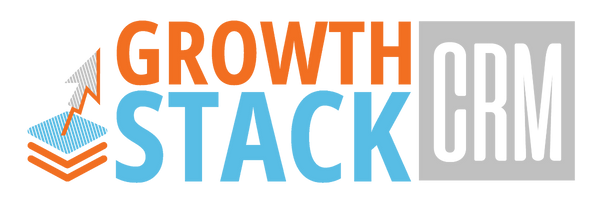
The Ultimate
Guide to
Effective Internet
Marketing
Welcome to our page on internet marketing! In today's digital age, having a strong online presence is crucial for businesses of all sizes. Internet marketing offers a powerful way to connect with your target audience, build brand awareness, and promote your products or services online. Whether you're just getting started or looking to take your digital marketing efforts to the next level, this page is packed with valuable information and tips to help you succeed in the world of internet marketing. So let's dive in and discover the exciting opportunities that await.
The Ultimate
Guide to
Effective Internet
Marketing

Welcome to our page on internet marketing! In today's digital age, having a strong online presence is crucial for businesses of all sizes. Internet marketing offers a powerful way to connect with your target audience, build brand awareness, and promote your products or services online. Whether you're just getting started or looking to take your digital marketing efforts to the next level, this page is packed with valuable information and tips to help you succeed in the world of internet marketing. So let's dive in and discover the exciting opportunities that await.
Internet marketing is a digital marketing technique encompassing social media, digital advertising, and SEO. It's a powerful way to connect with your customers, prospects, and partners online.
The digital age has changed the ways we interact with each other and do business. For example, the internet enables us to research our interests from home. It gives us access to news from all over the world in seconds! And it allows businesses of any size to share their products or services at home or around the world.
The term internet marketing can refer to all of the strategies and tactics involved in promoting your business on the internet. Or, it may refer more specifically to advertising or promotion on search engines like Google, Bing, and other sites that index web content.
The internet has been around for a long time, but marketing on the web is still relatively new. Unlike traditional marketing, you have to know where your target audience is and what they're looking at—in real-time.
One way to do this is by implementing digital marketing strategies: using digital channels like social media and email campaigns to build brand awareness and promote your brand or product.
Or you could work together with professionals who specialize in internet marketing: making sure that people can find you when they search for different terms on Google (or any of the other major search sites) without paying for advertisements on these sites individually.
Internet marketing is a digital marketing technique encompassing social media, digital advertising, and SEO. It's a powerful way to connect with your customers, prospects, and partners online.
The digital age has changed the ways we interact with each other and do business. For example, the internet enables us to research our interests from home. It gives us access to news from all over the world in seconds! And it allows businesses of any size to share their products or services at home or around the world.
The term internet marketing can refer to all of the strategies and tactics involved in promoting your business on the internet. Or, it may refer more specifically to advertising or promotion on search engines like Google, Bing, and other sites that index web content.
The internet has been around for a long time, but marketing on the web is still relatively new. Unlike traditional marketing, you have to know where your target audience is and what they're looking at—in real-time.
One way to do this is by implementing digital marketing strategies: using digital channels like social media and email campaigns to build brand awareness and promote your brand or product.
Or you could work together with professionals who specialize in internet marketing: making sure that people can find you when they search for different terms on Google (or any of the other major search sites) without paying for advertisements on these sites individually.

Digital Marketing vs.
Internet Marketing
Digital marketing is an umbrella term that includes all forms of digital media and encompasses most internet marketing types, such as your social media advertising and search engine optimization (SEO).
What are some examples? Common digital channels include websites, mobile apps, email and PPC campaigns, or digital ads on social media platforms like Facebook or Instagram.
Internet marketing is the process of building a digital presence to attract potential customers. To begin internet marketing, you'd want to create content that meets your audience's needs. These
would be articles, photos, or social media posts that educate and engage your customer on interesting topics.
For example, if your business specializes in advertising hats for dogs, you might publish Facebook posts about no-rinsing cleansers made specifically for washing pet hair. The goal is to provide enough interesting digital content that eventually encourages them to visit your site or make a purchase from your store.
A website can be used as an online hub where all of the digital assets are housed to continue engaging with customers on whichever platform they prefer without switching back and forth between multiple digital properties.

Digital Marketing vs.
Internet Marketing
Digital marketing is an umbrella term that includes all forms of digital media and encompasses most internet marketing types, such as your social media advertising and search engine optimization (SEO).
What are some examples? Common digital channels include websites, mobile apps, email and PPC campaigns, or digital ads on social media platforms like Facebook or Instagram.
Internet marketing is the process of building a digital presence to attract potential customers. To begin internet marketing, you'd want to create content that meets your audience's needs. These
would be articles, photos, or social media posts that educate and engage your customer on interesting topics.
For example, if your business specializes in advertising hats for dogs, you might publish Facebook posts about no-rinsing cleansers made specifically for washing pet hair. The goal is to provide enough interesting digital content that eventually encourages them to visit your site or make a purchase from your store.
A website can be used as an online hub where all of the digital assets are housed to continue engaging with customers on whichever platform they prefer without switching back and forth between multiple digital properties.

The Fundamentals
of Internet Marketing
1. Search Engine Marketing SEM
Search engine marketing, or SEM, refers to a series of techniques used by content creators to make sure their websites appear as high as possible in SERP (search engine results page) rankings, which means more traffic for them and better ROI (return on investment).
This process is constantly evolving because search engines regularly update their algorithms to ensure they give people more accurate results. Several factors determine how well search engines will rank your content on a SERP page regarding SEO. Some of them include:
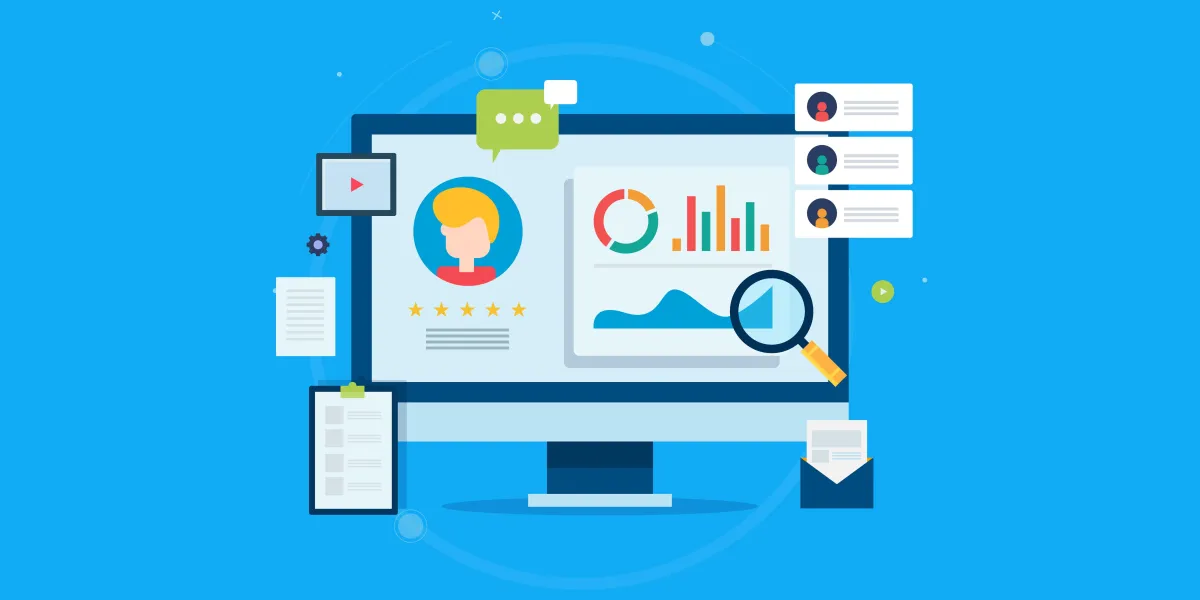
Keywords
Keyword research is one of the essential aspects when it comes to SEM. The content creators use these keywords in their posts to ensure they are found quickly by search engine crawlers or spiders.
This is called on-page optimization, and it's also essential for bringing more traffic because people who type certain words related to your business will see you first before anyone else, which means that they trust you.
Content Quality
This is another important aspect of SEM. Content creators should focus more on the best ways to deliver quality content rather than quantity to get better results regarding rankings.
People usually look for high-quality articles with well-written informative content because it's easier for them to understand and retain what they read at the end.
User Experience
Search engines also introduced user experience in their ranking factors. If the people who type keywords related to your business like what they see and read on your website content, there is a high chance you will be placed higher up in SERP rankings because of positive feedback from them, which means more traffic for you.
Social Media Presence
The social media presence of your business is another essential aspect of search engine optimization SEO because people who type specific keywords related to your company offers will also see how much engagement and interaction you have on different platforms like Twitter and Facebook, etc. This shows that they are interested in your business, so having a solid social media presence can help you get better rankings on SERP pages.
Backlinks
Backlinking is another important factor in search engine marketing because the link-building of your website content will impact how high up your website is placed when people type specific keywords related to your business.
In addition, the more backlinks your website content has, the higher it will rank on a SERP page because of positive feedback from other websites, which means that people trust you and see you as an authority in what you do, so they link to your site to show their readers how excellent or beneficial your posts are.
Link Popularity
Search engine crawlers need to understand how well your websites perform regarding link popularity. The higher you rank on a SERP page, the more traffic and engagement you will get from people who type specific keywords related to what your business offers because of positive feedback from other sites, which means that they trust you and see you as an authority in what you do.
User Engagement
User engagement is also another important aspect when it comes to search engine optimization SEO because the more people engage with your posts and interact with your content, the higher up they will be ranked on a SERP page, which means that people trust you and like what you post which means you are an authority in what you do so they want to be part of your community.
Social Engagement
A solid social media presence is another important aspect because people who type specific keywords related to the business will look for how well a company performs on different platforms like Twitter, Facebook, etc.
This shows that they are interested in your business, so having a strong social media presence can help you get better rankings on SERP pages and drive traffic. You can also take advantage of this and introduce social media marketing to your marketing channels.

The Fundamentals
of Internet Marketing
1. Search Engine Marketing SEM
Search engine marketing, or SEM, refers to a series of techniques used by content creators to make sure their websites appear as high as possible in SERP (search engine results page) rankings, which means more traffic for them and better ROI (return on investment).
This process is constantly evolving because search engines regularly update their algorithms to ensure they give people more accurate results. Several factors determine how well search engines will rank your content on a SERP page regarding SEO. Some of them include:

Keywords
Keyword research is one of the essential aspects when it comes to SEM. The content creators use these keywords in their posts to ensure they are found quickly by search engine crawlers or spiders.
This is called on-page optimization, and it's also essential for bringing more traffic because people who type certain words related to your business will see you first before anyone else, which means that they trust you.
Content Quality
This is another important aspect of SEM. Content creators should focus more on the best ways to deliver quality content rather than quantity to get better results regarding rankings.
People usually look for high-quality articles with well-written informative content because it's easier for them to understand and retain what they read at the end.
User Experience
Search engines also introduced user experience in their ranking factors. If the people who type keywords related to your business like what they see and read on your website content, there is a high chance you will be placed higher up in SERP rankings because of positive feedback from them, which means more traffic for you.
Social Media Presence
The social media presence of your business is another essential aspect of search engine optimization SEO because people who type specific keywords related to your company offers will also see how much engagement and interaction you have on different platforms like Twitter and Facebook, etc. This shows that they are interested in your business, so having a solid social media presence can help you get better rankings on SERP pages.
Backlinks
Backlinking is another important factor in search engine marketing because the link-building of your website content will impact how high up your website is placed when people type specific keywords related to your business.
In addition, the more backlinks your website content has, the higher it will rank on a SERP page because of positive feedback from other websites, which means that people trust you and see you as an authority in what you do, so they link to your site to show their readers how excellent or beneficial your posts are.
Link Popularity
Search engine crawlers need to understand how well your websites perform regarding link popularity. The higher you rank on a SERP page, the more traffic and engagement you will get from people who type specific keywords related to what your business offers because of positive feedback from other sites, which means that they trust you and see you as an authority in what you do.
User Engagement
User engagement is also another important aspect when it comes to search engine optimization SEO because the more people engage with your posts and interact with your content, the higher up they will be ranked on a SERP page, which means that people trust you and like what you post which means you are an authority in what you do so they want to be part of your community.
Social Engagement
A solid social media presence is another important aspect because people who type specific keywords related to the business will look for how well a company performs on different platforms like Twitter, Facebook, etc.
This shows that they are interested in your business, so having a strong social media presence can help you get better rankings on SERP pages and drive traffic. You can also take advantage of this and introduce social media marketing to your marketing channels.

2. Paid Ads (Facebook, Google Ads)
Paid ads are crucial in digital marketing because you can put a maximum bid on how much you're willing to spend on a specific keyword or phrase. Paid advertising also offers the advantage of targeting a particular audience with pinpoint accuracy.
Paid ads, for example, are an effective means of targeting Facebook users who have installed the Messenger app and have expressed interest in games.
READ: How to Get the Biggest Bang for Your Buck on Social Media Advertising

2. Paid Ads (Facebook, Google Ads)
Paid ads are crucial in digital marketing because you can put a maximum bid on how much you're willing to spend on a specific keyword or phrase. Paid advertising also offers the advantage of targeting a particular audience with pinpoint accuracy.
Paid ads, for example, are an effective means of targeting Facebook users who have installed the Messenger app and have expressed interest in games.
READ: How to Get the Biggest Bang for Your Buck on Social Media Advertising
3. Email Marketing
Email marketing is a very efficient and cost-effective way to deliver your message to the right person at the right time. Email marketing lets you reach out with offers and notices that entice people to take action.
The costs and effort required for an email campaign are minimal compared to other forms of marketing, such as TV or print media, so it's well worth giving it a go! Follow these 6 tips to ensure each email you sends drives sales—not unsubscribes.

The Benefits of
Internet Marketing
Internet marketing is an affordable and versatile digital marketing technique that can meet the digital needs of any business. There are various digital tools, from digital content to social media channels to digital advertising.
The benefits include:
Reduced your customer acquisition costs thanks to digital channels that provide instant access to millions of customers worldwide through online advertising
Increased sales as well as brand awareness
Efficient lead conversions as digital properties provide users with customer data such as contact information and purchase history
Quicker time to market as digital channels provide instant access to your customers
Enhanced customer service through digital properties such as live chat, email, and social media.
3. Email Marketing
Email marketing is a very efficient and cost-effective way to deliver your message to the right person at the right time. Email marketing lets you reach out with offers and notices that entice people to take action.
The costs and effort required for an email campaign are minimal compared to other forms of marketing, such as TV or print media, so it's well worth giving it a go! Follow these 6 tips to ensure each email you sends drives sales—not unsubscribes.

The Benefits
of Internet Marketing
Internet marketing is an affordable and versatile digital marketing technique that can meet the digital needs of any business. There are various digital tools, from digital content to social media channels to digital advertising.
The benefits include:
Reduced your customer acquisition costs thanks to digital channels that provide instant access to millions of customers worldwide through online advertising
Increased sales as well as brand awareness
Efficient lead conversions as digital properties provide users with customer data such as contact information and purchase history
Quicker time to market as digital channels provide instant access to your customers
Enhanced customer service through digital properties such as live chat, email, and social media.

Let's Talk About
Content Marketing
Content marketing is the future of marketing. It has become necessary for businesses, organizations, and individuals to have an online presence by creating content. This content can be informational or creative, designed to meet various needs of both existing customers and prospects.
Content marketing is a form of digital marketing. It's also known as inbound marketing because it uses target audiences' needs to drive prospects to your website. It allows you to build relationships with customers by giving them something valuable before asking for anything in return.
The idea behind content marketing is that consumers are more likely to trust businesses that provide them with exciting and educational content. In fact, one study found that 88 percent of marketers successfully reach their goals of creating brand awareness and building credibility and trust using content.
Content marketing may come in the form of:
Blog posts about topics related to your brand's niche
How-to videos, product demo videos, and vlogs
Infographics summarizing the information you want to share with your audience in a visually appealing way.
Downloadable PDFs and virtual ebooks
Social media posts
Comparison guides of your product compared to competitors
Contests and giveaways
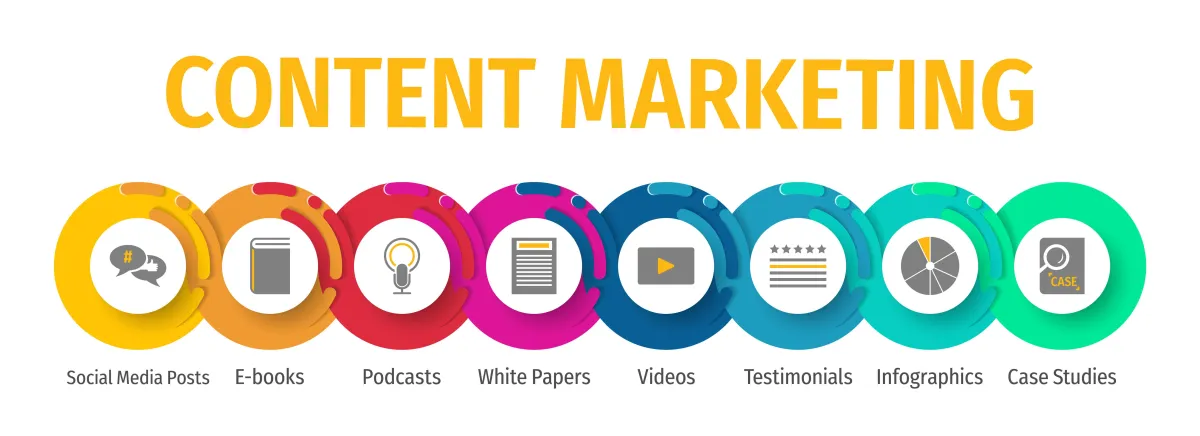
Millions of prospects out there right now might not know about your brand. But with content marketing, you can establish trust and make your brand known to your target audience.
For example, if you want your brand to be associated with a light mood, you can start creating humorous posts or get into memes. You can even engage your prospects visually through lists, social proof reviews, and so much more.
READ: How to Create Content People Will Actually Want to Read

Let's Talk About
Content Marketing
Content marketing is the future of marketing. It has become necessary for businesses, organizations, and individuals to have an online presence by creating content. This content can be informational or creative, designed to meet various needs of both existing customers and prospects.
Content marketing is a form of digital marketing. It's also known as inbound marketing because it uses target audiences' needs to drive prospects to your website. It allows you to build relationships with customers by giving them something valuable before asking for anything in return.
The idea behind content marketing is that consumers are more likely to trust businesses that provide them with exciting and educational content. In fact, one study found that 88 percent of marketers successfully reach their goals of creating brand awareness and building credibility and trust using content.
Content marketing may come in the form of:
Blog posts about topics related to your brand's niche
How-to videos, product demo videos, and vlogs
Infographics summarizing the information you want to share with your audience in a visually appealing way.
Downloadable PDFs and virtual ebooks
Social media posts
Comparison guides of your product compared to competitors
Contests and giveaways

Millions of prospects out there right now might not know about your brand. But with content marketing, you can establish trust and make your brand known to your target audience.
For example, if you want your brand to be associated with a light mood, you can start creating humorous posts or get into memes. You can even engage your prospects visually through lists, social proof reviews, and so much more.
READ: How to Create Content People Will Actually Want to Read

How Content Marketing Can Change
Your Target Audience's Perception
Content marketing can change your audience's perception of your brand through relevant, engaging content that allows you to speak directly to your target market.
Don't expect significant changes overnight if your company is new to content marketing. Instead, focus on producing valuable content for your potential customers. You'll start seeing results after a few months of consistent effort.
Unlike traditional marketing, content marketing is a long-term investment. The more quality content you put out, the more likely people will recognize your brand when shopping for relevant products.
Also, you have more opportunities to engage people who are already familiar with your company and convert them into loyal customers.
The content marketing world has changed drastically over the last few years. Gone are the days of content being seen as a one-time promotional piece. Instead, content has become integral to
virtually every company's marketing strategy.
Today, content is less about getting your message out than creating content that engages customers while providing them with the information they need to make intelligent purchasing decisions.
Content marketing improves the customer experience and leads to better SEO ranking and greater website traffic. Here are some of the most notable benefits associated with content marketing:
It is an excellent tool for lead generation.
It can help you grow your email subscriber list.
It helps increase website traffic and improves ranking in search engines.
It builds trust and helps establish/reinforce your brand's authority.
Content marketers can give content away as a free download to build their subscriber list.
You no longer need to feel hesitant about getting involved in content marketing; you should embrace it as integral to your overall business strategy.
READ: What to Do When Your Content Marketing Strategy Doesn’t Work

How Content Marketing
Can Change
Your Target Audience's Perception
Content marketing can change your audience's perception of your brand through relevant, engaging content that allows you to speak directly to your target market.
Don't expect significant changes overnight if your company is new to content marketing. Instead, focus on producing valuable content for your potential customers. You'll start seeing results after a few months of consistent effort.
Unlike traditional marketing, content marketing is a long-term investment. The more quality content you put out, the more likely people will recognize your brand when shopping for relevant products.
Also, you have more opportunities to engage people who are already familiar with your company and convert them into loyal customers.
The content marketing world has changed drastically over the last few years. Gone are the days of content being seen as a one-time promotional piece. Instead, content has become integral to virtually every company's marketing strategy.
Today, content is less about getting your message out than creating content that engages customers while providing them with the information they need to make intelligent purchasing decisions.
Content marketing improves the customer experience and leads to better SEO ranking and greater website traffic. Here are some of the most notable benefits associated with content marketing:
It is an excellent tool for lead generation.
It can help you grow your email subscriber list.
It helps increase website traffic and improves ranking in search engines.
It builds trust and helps establish/reinforce your brand's authority.
Content marketers can give content away as a free download to build their subscriber list.
You no longer need to feel hesitant about getting involved in content marketing; you should embrace it as integral to your overall business strategy.
READ: What to Do When Your Content Marketing Strategy Doesn’t Work

How to Create Relevant Content
for Your Target Audience
The key word here is "relevant content.” You want to publish content relevant to your company, product/service in an engaging manner. That means your content needs to appeal to your audience in terms of topics discussed and style (e.g., humorous videos vs. informative blog posts).
Many different types of content can engage your targeted audiences, but the key is to find what kind of content your customers engage with the most. Some audiences respond well to social media campaigns and surveys. Others prefer to sit down and watch a how-to video.
Content marketing is no longer about creating quality content but engaging and personalized content for your market. Using a data-driven approach, content marketers can create highly personalized and targeted content that resonates more strongly with readers.
So what does the future hold for content marketing?
1. Personalized Content
As technology advances, marketers will be able to personalize content even more than they do now. This means your audience will see content tailored to their interests and needs, increasing their chances of interacting with it.
2. Interactive Content
Aside from being more personalized, the content will also become more interactive. Your audience engages with it in various ways, including commenting, sharing, and liking.
3. Video Engagement
Video is already the most popular type of content, which will only increase in the future. People are drawn to video because it's engaging and easy to consume. As a result, more and more brands will use video as a way to reach their target audiences.
Not sure where to get started with video content? Find out 6 simple ways to incorporate video into your content strategy.

How to Create Relevant Content
for Your Target Audience
The key word here is "relevant content.” You want to publish content relevant to your company, product/service in an engaging manner. That means your content needs to appeal to your audience in terms of topics discussed and style (e.g., humorous videos vs. informative blog posts).
Many different types of content can engage your targeted audiences, but the key is to find what kind of content your customers engage with the most. Some audiences respond well to social media campaigns and surveys. Others prefer to sit down and watch a how-to video.
Content marketing is no longer about creating quality content but engaging and personalized content for your market. Using a data-driven approach, content marketers can create highly personalized and targeted content that resonates more strongly with readers.
So what does the future hold for content marketing?
1. Personalized Content
As technology advances, marketers will be able to personalize content even more than they do now. This means your audience will see content tailored to their interests and needs, increasing their chances of interacting with it.
2. Interactive Content
Aside from being more personalized, the content will also become more interactive. Your audience engages with it in various ways, including commenting, sharing, and liking.
3. Video Engagement
Video is already the most popular type of content, which will only increase in the future. People are drawn to video because it's engaging and easy to consume. As a result, more and more brands will use video as a way to reach their target audiences.
Not sure where to get started with video content? Find out 6 simple ways to incorporate video into your content strategy.

How to Create a Content
Marketing Strategy
1. Decide on Your Marketing Goal
To begin, examine your company's current content requirements by asking questions like What are your goals? What makes you believe it's significant? Have a clear vision and goal in mind.
2. Determine the Content You Need to Create
Begin brainstorming topics for future entries, such as client testimonials, behind-the-scenes looks at goods or services, or a blog post on current trends.
3. Create a Content Production Schedule
Make a content calendar to help you keep organized and prioritize the material most essential to your organization.
4. Map Out How You'll Promote Your Content
Determine how much work you're willing to put into developing content based on your present resources (such as time and cash).
5. Set Up Analytics and Measure the Success
of Your Content Strategy Over Time
When establishing a content strategy, be sure to track and report on your progress regularly to determine whether you're on track to accomplish your objectives. You'll also need to devote some time to keyword research to increase visibility.

How to Create a Content
Marketing Strategy
1. Decide on Your Marketing Goal
To begin, examine your company's current content requirements by asking questions like What are your goals? What makes you believe it's significant? Have a clear vision and goal in mind.
2. Determine the Content You Need to Create
Begin brainstorming topics for future entries, such as client testimonials, behind-the-scenes looks at goods or services, or a blog post on current trends.
3. Create a Content Production Schedule
Make a content calendar to help you keep organized and prioritize the material most essential to your organization.
4. Map Out How You'll Promote Your Content
Determine how much work you're willing to put into developing content based on your present resources (such as time and cash).
5. Set Up Analytics and Measure the Success of Your Content Strategy Over Time
When establishing a content strategy, be sure to track and report on your progress regularly to determine whether you're on track to accomplish your objectives. You'll also need to devote some time to keyword research to increase visibility.

Internet Marketing
for Small Businesses
Small business marketing is a lot of work. It requires a lot of time and money to be successful. Yet, for many small businesses, marketing is the most critical aspect. Fortunately, there are a lot of tools and techniques that you can use to help make marketing more efficient for these businesses.
Small business marketing is about finding new customers and keeping existing ones happy. Your company's marketing strategy may include advertising, public relations, and many other things.

Internet Marketing
for Small Businesses
Small business marketing is a lot of work. It requires a lot of time and money to be successful. Yet, for many small businesses, marketing is the most critical aspect. Fortunately, there are a lot of tools and techniques that you can use to help make marketing more efficient for these businesses.
Small business marketing is about finding new customers and keeping existing ones happy. Your company's marketing strategy may include advertising, public relations, and many other things.

How to Create a
Marketing Campaign
A marketing campaign consists of a message, a target audience, and a budget. This message is spread to the audience and hopefully creates some positive reactions.
The purpose of a marketing campaign is to develop an overall interest in your business; it's supposed to be memorable.
A successful marketing campaign should do two things: create brand awareness and form an emotional connection with your audience. This is done so they feel they need what you're selling.
It can take months or years to build up enough momentum for your product or service, but there are ways you can speed that process along. Before you create your marketing campaign, you must learn the types of marketing campaigns. There are three, namely:
Awareness
This campaign strategy aims to raise awareness. Awareness is when people become aware that your offer exists.
This is usually done through promotional material such as logos, slogans, or a social media campaign. This campaign aims to create a feel for your business without selling them anything.
Persuasion
Persuasive advertising is a form of marketing that tries to convince the viewer to an emotional response. Examples of this might be commercials for cigarettes or alcohol, but they can also involve print and video advertisements.
Persuasive advertising may seem inherently manipulative as it focuses on lead generation. Its ethics are often debated; however, if you're trying to sell anything in life - even cars - persuading people into believing it's worth their while is essential to create revenue.
Effective persuasive campaigns do three things:
The first thing they have to accomplish is to identify what the current need or want is among your potential customers;
Then they need to persuade them that your offer will fulfill this need better than any other (usually through testimonials).
Finally, they must convince your prospects that they need your offer now.
Conversion
Conversion advertising is a type of advertising used to redirect the traffic on your website to the desired action. For example, you can use social media advertising to sell or get people to sign up for your newsletter.
The idea behind conversion advertising is that you want to have visitors take action on your landing page, such as by registering for something or clicking through to another page.
Most businesses don't see a significant increase in traffic on their site overnight. Often, you have to wait months to gain that extra traffic, and when it comes, there is only so much you can do with it.
If you run a website where people come for information rather than purchasing products or services, conversion advertising could be the solution.
Now that you can align your goals on a marketing campaign, let's get to the steps to create one.

How to Create a Marketing Campaign
A marketing campaign consists of a message, a target audience, and a budget. This message is spread to the audience and hopefully creates some positive reactions.
The purpose of a marketing campaign is to develop an overall interest in your business; it's supposed to be memorable.
A successful marketing campaign should do two things: create brand awareness and form an emotional connection with your audience. This is done so they feel they need what you're selling.
It can take months or years to build up enough momentum for your product or service, but there are ways you can speed that process along. Before you create your marketing campaign, you must learn the types of marketing campaigns. There are three, namely:
Awareness
This campaign strategy aims to raise awareness. Awareness is when people become aware that your offer exists.
This is usually done through promotional material such as logos, slogans, or a social media campaign. This campaign aims to create a feel for your business without selling them anything.
Persuasion
Persuasive advertising is a form of marketing that tries to convince the viewer to an emotional response. Examples of this might be commercials for cigarettes or alcohol, but they can also involve print and video advertisements.
Persuasive advertising may seem inherently manipulative as it focuses on lead generation. Its ethics are often debated; however, if you're trying to sell anything in life - even cars - persuading people into believing it's worth their while is essential to create revenue.
Effective persuasive campaigns do three things:
The first thing they have to accomplish is to identify what the current need or want is among your potential customers;
Then they need to persuade them that your offer will fulfill this need better than any other (usually through testimonials).
Finally, they must convince your prospects that they need your offer now.
Conversion
Conversion advertising is a type of advertising used to redirect the traffic on your website to the desired action. For example, you can use social media advertising to sell or get people to sign up for your newsletter.
The idea behind conversion advertising is that you want to have visitors take action on your landing page, such as by registering for something or clicking through to another page.
Most businesses don't see a significant increase in traffic on their site overnight. Often, you have to wait months to gain that extra traffic, and when it comes, there is only so much you can do with it.
If you run a website where people come for information rather than purchasing products or services, conversion advertising could be the solution.
Now that you can align your goals on a marketing campaign, let's get to the steps to create one.
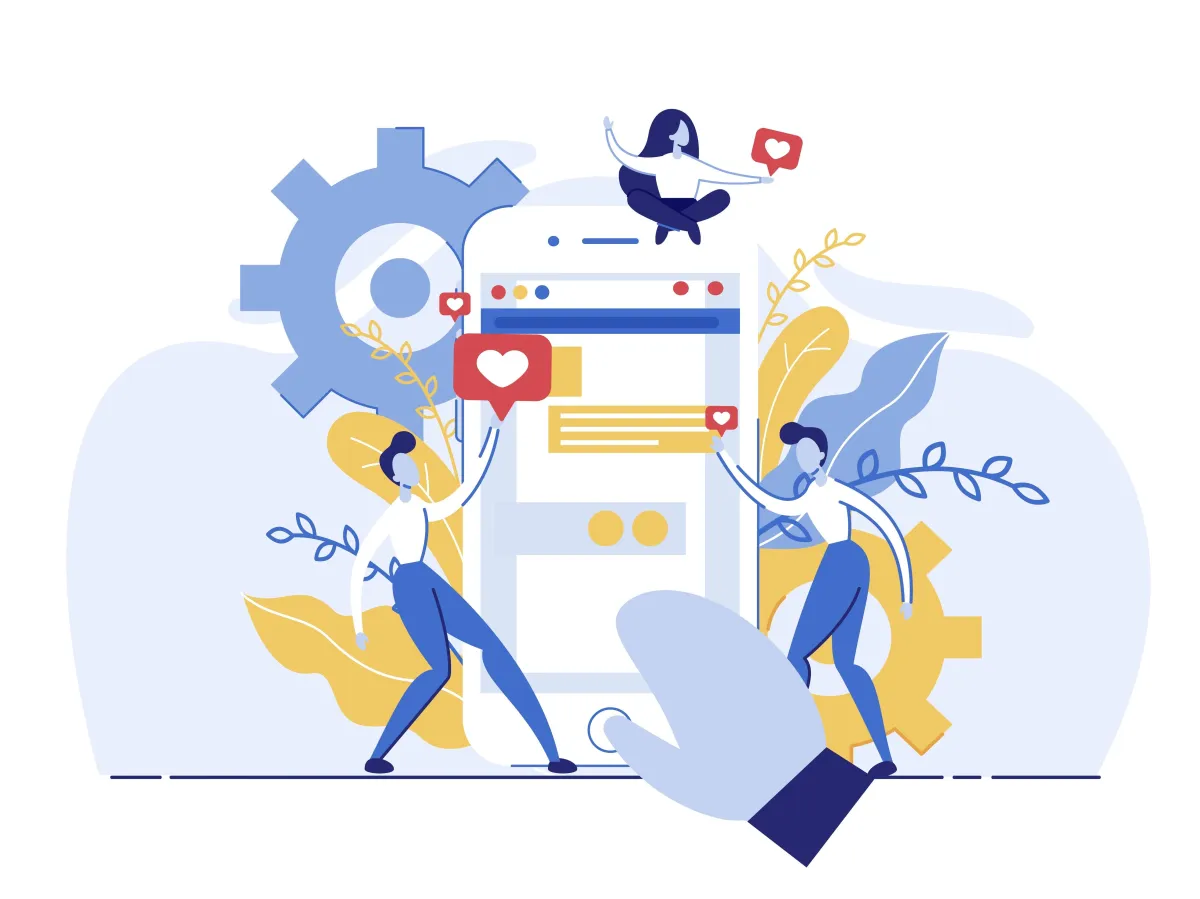
1. Develop a Message
The first step in creating an effective marketing campaign is developing a marketing message. Everything you do going forward will result from this initial decision, so it's essential to put some time and effort into it.
The target for your marketing campaign could depend on who you are trying to reach and the type of offer you have. For example, dog owners would respond better to different messages than cat lovers.
You should also consider how much you intend to spend on this advertising campaign; would it make sense if your potential customers were all millionaires?
Finally, you'll want to figure out your campaign audience before deciding what products they're interested in buying. Dogs couldn't care less about luxury cars. Consider target audiences and media channels before choosing products.
2. Target an Audience
Maybe you've decided on the offer that will be the focus of your marketing campaign, but how should you target your message? Demographic age and gender, economic class, and geographic location are three powerful tools for targeting new customers.
Demographic data is usually gathered by interviewing your potential customers about themselves. And it may also include other factors like zip code, income bracket, or family size. The age group might be most important for food products where teenagers are unlikely to buy baby food.
Price can also target specific markets; a luxury car manufacturer selling their cars at $20K per could probably target households with over $100k a year. At the same time, they would struggle if they were trying to market their expensive car to families earning around $40k a year.
Corporate target audiences also share similarities; target audiences for breakfast restaurants would probably target families with children, whereas another restaurant might target singles without kids looking for a night out on the town.
Determining a target audience gives a clear picture of what you'll profit from your marketing investment.
3. Establish a Campaign Budget
This is the step that will make or break your marketing campaign. Targeting a specific audience and considering how much money you're willing to spend on advertising is crucial because both can impact your campaign's success.
You'll also want to determine the target market that might buy products from your organization - will they be millionaires? Children? Single adults with disposable incomes? Consider which demographic data you'll gather; age group (important for food products), income bracket, and family size.
Next, you should determine how much money to spend on this strategy. Would it be a waste if all millionaires had more than $40k per year? How big do customer groups have to be for you to target them successfully?
4. Create the Marketing Campaign,
Including Visuals and Copywriting
People buy things because they're told to. In their lives, most consumers are bombarded with direct and indirect messages from various sources, including marketing campaigns created by agencies like ours.
That's why your offer must sound appealing from the very start.
Copywriters create those catchy headlines, informative blurbs, and entertaining social media content for you. This step in the process is where you can take control of your campaign.
Some businesses create their copy, whereas others hire an expert copywriter to craft their words for them.
You also need to include visual elements of your marketing campaign. A great photo, video, graphic design, or illustration can significantly impact how people perceive your brand.
For example, an image of a smiling family enjoying delicious food at your restaurant will draw in more clients than the picture with big red strike-throughs over it telling everyone not to eat there!
5. Execute the Campaign
to Reach Your Target Audience
Executing a marketing campaign is vital as it's the step that will make or break your entire plan!
The first thing you need to do before executing any ad is determined what exactly you're advertising. Is it a new product? A current promotion? It's important to know what you're advertising, your existing customer base, and where they can be found.
The next step is determining how much money from the marketing campaign budget needs to be spent on this strategy. For example, would it be wasteful if all customers were millionaires with expensive tastes who couldn't afford more than $40k per year? But, on the other hand, how big does the group need to be for you to target them successfully?

6. Determine the Effectiveness of
the Campaign with Analytics Data
As part of your marketing strategy, measuring analytics data is important. That way, you can see what customers respond to the call to action of your current ad campaign.
You'll need Google Analytics for this step in the process. Other tools to track your campaign include AdWords and Facebook Ads for social media.
READ: How to Determine the Effectiveness of Your Digital Marketing Campaign
7. Evaluate the Current Campaign
and Make Adjustments as Necessary
Evaluate your current marketing strategy after it's been executed. This is to measure success to determine if any changes need to be made.
Depending on how successful you were with your current campaign, you may decide to tweak the copywriting, reorganize your budget, or introduce a new marketing channel like social media.
If you're happy with the current results, continue with the plan until a need for change arises. The marketing team can always apply feedback from the entire campaign to your company's future marketing campaigns.
If this is your first campaign, you can use it as a future marketing campaign template to design future strategies.

1. Develop a Message
The first step in creating an effective marketing campaign is developing a marketing message. Everything you do going forward will result from this initial decision, so it's essential to put some time and effort into it.
The target for your marketing campaign could depend on who you are trying to reach and the type of offer you have. For example, dog owners would respond better to different messages than cat lovers.
You should also consider how much you intend to spend on this advertising campaign; would it make sense if your potential customers were all millionaires?
Finally, you'll want to figure out your campaign audience before deciding what products they're interested in buying. Dogs couldn't care less about luxury cars. Consider target audiences and media channels before choosing products.
2. Target an Audience
Maybe you've decided on the offer that will be the focus of your marketing campaign, but how should you target your message? Demographic age and gender, economic class, and geographic location are three powerful tools for targeting new customers.
Demographic data is usually gathered by interviewing your potential customers about themselves. And it may also include other factors like zip code, income bracket, or family size. The age group might be most important for food products where teenagers are unlikely to buy baby food.
Price can also target specific markets; a luxury car manufacturer selling their cars at $20K per could probably target households with over $100k a year. At the same time, they would struggle if they were trying to market their expensive car to families earning around $40k a year.
Corporate target audiences also share similarities; target audiences for breakfast restaurants would probably target families with children, whereas another restaurant might target singles without kids looking for a night out on the town.
Determining a target audience gives a clear picture of what you'll profit from your marketing investment.
3. Establish a Campaign Budget
This is the step that will make or break your marketing campaign. Targeting a specific audience and considering how much money you're willing to spend on advertising is crucial because both can impact your campaign's success.
You'll also want to determine the target market that might buy products from your organization - will they be millionaires? Children? Single adults with disposable incomes? Consider which demographic data you'll gather; age group (important for food products), income bracket, and family size.
Next, you should determine how much money to spend on this strategy. Would it be a waste if all millionaires had more than $40k per year? How big do customer groups have to be for you to target them successfully?
4. Create the Marketing Campaign,
Including Visuals and Copywriting
People buy things because they're told to. In their lives, most consumers are bombarded with direct and indirect messages from various sources, including marketing campaigns created by agencies like ours.
That's why your offer must sound appealing from the very start.
Copywriters create those catchy headlines, informative blurbs, and entertaining social media content for you. This step in the process is where you can take control of your campaign.
Some businesses create their copy, whereas others hire an expert copywriter to craft their words for them.
You also need to include visual elements of your marketing campaign. A great photo, video, graphic design, or illustration can significantly impact how people perceive your brand.
For example, an image of a smiling family enjoying delicious food at your restaurant will draw in more clients than the picture with big red strike-throughs over it telling everyone not to eat there!
5. Execute the Campaign to Reach Your Target Audience
Executing a marketing campaign is vital as it's the step that will make or break your entire plan!
The first thing you need to do before executing any ad is determined what exactly you're advertising. Is it a new product? A current promotion? It's important to know what you're advertising, your existing customer base, and where they can be found.
The next step is determining how much money from the marketing campaign budget needs to be spent on this strategy. For example, would it be wasteful if all customers were millionaires with expensive tastes who couldn't afford more than $40k per year? But, on the other hand, how big does the group need to be for you to target them successfully?

6. Determine the Effectiveness of
the Campaign with Analytics Data
As part of your marketing strategy, measuring analytics data is important. That way, you can see what customers respond to the call to action of your current ad campaign.
You'll need Google Analytics for this step in the process. Other tools to track your campaign include AdWords and Facebook Ads for social media.
READ: How to Determine the Effectiveness of Your Digital Marketing Campaign
7. Evaluate the Current Campaign
and Make Adjustments as Necessary
Evaluate your current marketing strategy after it's been executed. This is to measure success to determine if any changes need to be made.
Depending on how successful you were with your current campaign, you may decide to tweak the copywriting, reorganize your budget, or introduce a new marketing channel like social media.
If you're happy with the current results, continue with the plan until a need for change arises. The marketing team can always apply feedback from the entire campaign to your company's future marketing campaigns.
If this is your first campaign, you can use it as a future marketing campaign template to design future strategies.

How Long Should a
Marketing Campaign Last?
Awareness Marketing Campaigns
You use awareness marketing campaigns to increase awareness about your product or service. It communicates the benefits, values, and personality of your company.
The ideal timeline for this campaign is 6-12 months. It depends on the product or service you promote, where your target audience lives, and what is happening in their world.
Brand Awareness
The branding campaign aims to create a positive association between your product or service and your company name. It’s essential to establish this early on so customers feel comfortable purchasing from you in the future. Therefore, the ideal timeline for this campaign is 6-18 months.
Event Marketing
The branding campaign aims to create a positive association between your product or service and your company name. It’s essential to establish this early on so customers feel comfortable purchasing from you in the future. Therefore, the ideal timeline for this campaign is 6-18 months.
Public Relations (PR) Campaigns
You can use a PR campaign in the short term and long term, making it very versatile. For example, it involves getting the media to write about your business or distribute your marketing content through their channels.
The ideal timeline for this type of campaign is 6 months to 5 years, depending on what you’re looking to achieve!
Social Media Marketing Campaigns
Social media campaigns include all digital activity undertaken within social media platforms such as Facebook, LinkedIn, Instagram, and Twitter. The ideal timeline for this digital marketing campaign is 1 month to 12 months, depending on your goal!
Lead Generation Marketing Campaign
The lead generation campaign aims to generate leads for your business. The ideal timeline for this marketing campaign usually depends on how you generate the leads but typically falls
between 3 and 12 months.
For example: since event marketing campaigns allow you to create leaders in person, the timeline for those campaigns tends to be shorter.
Content Marketing Campaigns
Content marketing is a type of online marketing. The main goal of this campaign is typically long-term and sustainable by creating high-quality blog posts that your audience wants to read.
The ideal timeline for this type of marketing campaign usually falls between 6 months and 2 years.
Competition Marketing Campaigns
This can include sports or event marketing, depending on the industry. The goal is to get your business name associated with an event, person, or product that aligns well with your values and personality while also creating brand awareness.
The ideal timeline for this marketing campaign is 6 months to 3 years, depending on the industry and nature of the sponsorship/event.
Email Marketing
Email marketing involves creating email newsletters that you send, usually weekly or monthly. These contain product updates as well as other relevant content about your company. This type of campaign works best when the company has an extensive database of contacts to reach out to. The ideal timeline for this marketing campaign is 3 months to 2 years, depending on your goal!
Native Advertising
Native advertising refers to content that appears natural and non-disruptive across social media channels such as Facebook and Instagram. The ideal timeline for this kind of marketing campaign is 2 to 18 months, depending on your goal!
Lead Nurturing Campaigns
A lead nurturing campaign is a long-term marketing strategy allowing new leads to move through your marketing funnel quickly. The ideal timeline for this type of marketing campaign usually falls between 3 and 18 months, depending on the nature of the business.
Advocacy Marketing Campaign
Ideally, advocacy marketing campaigns encourage existing customers to promote your products/services to their friends and family. This is often done through peer-to-peer campaigns or digital ads that direct people to an external website with a call to action, where they can purchase directly from you.
The ideal timeline for this type of marketing campaign usually falls between 3 months and 12 months.
Promotional Marketing Campaign
A promotional marketing campaign is about getting your business name out by giving away free products, samples, or coupons to potential customers. The goal of this type of campaign is typically short-term and is a way to get new leads on board with minimal effort.
A promotional advertising campaign should occur over a few weeks. However, you want to build excitement in a short period, so you can have your audience ready for the next campaign when it’s launched!
By now, you should know how long each marketing campaign typically lasts and what factors are critical to successful campaigns. Now go out there and impact your business by developing a marketing campaign to help you grow!

How Long Should a
Marketing Campaign Last?
Awareness Marketing Campaigns
You use awareness marketing campaigns to increase awareness about your product or service. It communicates the benefits, values, and personality of your company.
The ideal timeline for this campaign is 6-12 months. It depends on the product or service you promote, where your target audience lives, and what is happening in their world.
Brand Awareness
The branding campaign aims to create a positive association between your product or service and your company name. It’s essential to establish this early on so customers feel comfortable purchasing from you in the future. Therefore, the ideal timeline for this campaign is 6-18 months.
Event Marketing
The branding campaign aims to create a positive association between your product or service and your company name. It’s essential to establish this early on so customers feel comfortable purchasing from you in the future. Therefore, the ideal timeline for this campaign is 6-18 months.
Public Relations (PR) Campaigns
You can use a PR campaign in the short term and long term, making it very versatile. For example, it involves getting the media to write about your business or distribute your marketing content through their channels.
The ideal timeline for this type of campaign is 6 months to 5 years, depending on what you’re looking to achieve!
Social Media Marketing Campaigns
Social media campaigns include all digital activity undertaken within social media platforms such as Facebook, LinkedIn, Instagram, and Twitter. The ideal timeline for this digital marketing campaign is 1 month to 12 months, depending on your goal!
Lead Generation
Marketing Campaign
The lead generation campaign aims to generate leads for your business. The ideal timeline for this marketing campaign usually depends on how you generate the leads but typically falls
between 3 and 12 months.
For example: since event marketing campaigns allow you to create leaders in person, the timeline for those campaigns tends to be shorter.
Content Marketing Campaigns
Content marketing is a type of online marketing. The main goal of this campaign is typically long-term and sustainable by creating high-quality blog posts that your audience wants to read.
The ideal timeline for this type of marketing campaign usually falls between 6 months and 2 years.
Competition Marketing Campaigns
This can include sports or event marketing, depending on the industry. The goal is to get your business name associated with an event, person, or product that aligns well with your values and personality while also creating brand awareness.
The ideal timeline for this marketing campaign is 6 months to 3 years, depending on the industry and nature of the sponsorship/event.
Email Marketing
Email marketing involves creating email newsletters that you send, usually weekly or monthly. These contain product updates as well as other relevant content about your company. This type of campaign works best when the company has an extensive database of contacts to reach out to. The ideal timeline for this marketing campaign is 3 months to 2 years, depending on your goal!
Native Advertising
Native advertising refers to content that appears natural and non-disruptive across social media channels such as Facebook and Instagram. The ideal timeline for this kind of marketing campaign is 2 to 18 months, depending on your goal!
Lead Nurturing Campaigns
A lead nurturing campaign is a long-term marketing strategy allowing new leads to move through your marketing funnel quickly. The ideal timeline for this type of marketing campaign usually falls between 3 and 18 months, depending on the nature of the business.
Advocacy Marketing Campaign
Ideally, advocacy marketing campaigns encourage existing customers to promote your products/services to their friends and family. This is often done through peer-to-peer campaigns or digital ads that direct people to an external website with a call to action, where they can purchase directly from you.
The ideal timeline for this type of marketing campaign usually falls between 3 months and 12 months.
Promotional Marketing Campaign
A promotional marketing campaign is about getting your business name out by giving away free products, samples, or coupons to potential customers. The goal of this type of campaign is typically short-term and is a way to get new leads on board with minimal effort.
A promotional advertising campaign should occur over a few weeks. However, you want to build excitement in a short period, so you can have your audience ready for the next campaign when it’s launched!
By now, you should know how long each marketing campaign typically lasts and what factors are critical to successful campaigns. Now go out there and impact your business by developing a marketing campaign to help you grow!

How to Measure the Effectiveness
of a Digital Marketing Campaign
There are multiple key performance indicators used to measure the success of a digital marketing campaign. The most well-known is the number of impressions the campaign generates. Here are nine different ways to measure the success of a digital marketing campaign:
Number of Views
One way to measure your digital marketing campaign's success is the number of views it receives. For example, a video marketing campaign might have a goal of three million views in three months. Your company would then track the marketing campaign's progress by looking at how many views each video gets and ensuring it stays on track to meet its goal.
Number of Clicks
Another measure of marketing campaign success is the number of clicks your ads generate. One example might be a marketing campaign that aims to get 100 clicks in three months for an ad.
Your company would then track the marketing campaign's progress by looking at how many clicks each marketing ad gets and whether or not it stays on track to meet its goal.
Conversion Rate
The conversion rate is the percentage of people interested in your business and completing an associated action. For example, if only one person 100 completes a contact form on your site,
you have a 1% conversion rate.
An example might be a marketing campaign that you run on Google Adwords. You can use the Conversions Report to see how well your marketing campaign converts users into customers.
The report will show you what marketing actions were clicked through, an estimate of how much money they generated, and their conversion rate (the success rate for each marketing action).
Total Return on Investment (ROI)
Total Return on Investment (ROI) is a measure expressing the ratio of return on a marketing investment relative to its cost.
You take the total marketing action costs and divide them by the total marketing actions converted to calculate ROI. For example, if you spent $20 on marketing actions that generated $100 in revenue, your ROI would be 100%. Thus, your marketing investment has yielded a return of three times what it costs.
Unique Visitors
Unique visitors are one digital marketing metrics to measure marketing campaign effectiveness. Suppose you know the number of visitors to your website each day. In that case, you can determine how many visitors your marketing campaign brought in by subtracting the daily visitor count from the marketing campaign duration.
For example, if you run a marketing campaign for five days and increase your website's traffic by 10%, your marketing campaign has drawn in 50% more than the average daily visitors.
Cost per Click/Conversion
Cost per click or conversion is another marketing metric that helps measure marketing campaign effectiveness. With this marketing metric, you can determine the marketing campaign's ROI. For instance, if you have a marketing campaign that costs $1,000 and gets 100 clicks but only five conversions (sales), your marketing campaign's ROI is 20%.
Click-through Rate
A marketing success measurement often used to track marketing effectiveness is click-through rate. Click-through rate is the ratio of marketing impressions to your marketing clicks. Marketing
impressions are the number of times your marketing materials were displayed to users. Marketing clicks are the number of times consumers click on your marketing materials.
The click-through rate is significant because it tells you how relevant your marketing materials and advertisement links are for potential customers.
A higher click-through rate means more interested prospects. Therefore, areas with a high level of interest will have a positive click-through rate. A marketing click-through rate may also be considered negative if the ratio is low, meaning that users find your marketing materials irrelevant. In this case, your company should review its marketing strategy and make necessary changes.
Quality Score in AdWords
Quality score is a marketing metric that can compare marketing campaigns and identify specialists who can deliver the best marketing strategy.
The higher the quality score, the more likely they will rank higher for keywords or search phrases. Your business will receive more monthly impressions for keywords or search terms with higher
quality scores.
The quality score factors include keyword target, landing page experience, ad creative, keyword relevance, keyword location, and text ad image.
The keywords' relevance is important because they can generate high-quality leads if targeted correctly.
Landing page experience refers to the marketing website and the marketing page and how easy it is to use and navigate.
The ad creative quality score factor refers to how well your marketing materials are written and presented. For example, if your marketing ads aren't attractive enough, users may be less likely to click on them, resulting in a lower Quality Score.
If keywords have poor relevance, they won't convert into leads or sales. Unfortunately, this means that your marketing campaigns will not be successful.
Different marketing specialists may have other quality scores for the exact keywords due to variations in their marketing strategies and ad copy, so you must choose specialists who can create high-quality ads every time they run a marketing campaign.

How to Measure the Effectiveness
of a Digital Marketing Campaign
There are multiple key performance indicators used to measure the success of a digital marketing campaign. The most well-known is the number of impressions the campaign generates. Here are nine different ways to measure the success of a digital marketing campaign:
Number of Views
One way to measure your digital marketing campaign's success is the number of views it receives. For example, a video marketing campaign might have a goal of three million views in three months. Your company would then track the marketing campaign's progress by looking at how many views each video gets and ensuring it stays on track to meet its goal.
Number of Clicks
Another measure of marketing campaign success is the number of clicks your ads generate. One example might be a marketing campaign that aims to get 100 clicks in three months for an ad. Your company would then track the marketing campaign's progress by looking at how many clicks each marketing ad gets and whether or not it stays on track to meet its goal.
Conversion Rate
The conversion rate is the percentage of people interested in your business and completing an associated action. For example, if only one person 100 completes a contact form on your site,
you have a 1% conversion rate.
An example might be a marketing campaign that you run on Google Adwords. You can use the Conversions Report to see how well your marketing campaign converts users into customers.
The report will show you what marketing actions were clicked through, an estimate of how much money they generated, and their conversion rate (the success rate for each marketing action).
Total Return on
Investment (ROI)
Total Return on Investment (ROI) is a measure expressing the ratio of return on a marketing investment relative to its cost.
You take the total marketing action costs and divide them by the total marketing actions converted to calculate ROI. For example, if you spent $20 on marketing actions that generated $100 in revenue, your ROI would be 100%. Thus, your marketing investment has yielded a return of three times what it costs.
Unique Visitors
Unique visitors are one digital marketing metrics to measure marketing campaign effectiveness. Suppose you know the number of visitors to your website each day. In that case, you can determine how many visitors your marketing campaign brought in by subtracting the daily visitor count from the marketing campaign duration.
For example, if you run a marketing campaign for five days and increase your website's traffic by 10%, your marketing campaign has drawn in 50% more than the average daily visitors.
Cost per Click/Conversion
Cost per click or conversion is another marketing metric that helps measure marketing campaign effectiveness. With this marketing metric, you can determine the marketing campaign's ROI. For instance, if you have a marketing campaign that costs $1,000 and gets 100 clicks but only five conversions (sales), your marketing campaign's ROI is 20%.
Click-through Rate
A marketing success measurement often used to track marketing effectiveness is click-through rate. Click-through rate is the ratio of marketing impressions to your marketing clicks. Marketing impressions are the number of times your marketing materials were displayed to users. Marketing clicks are the number of times consumers click on your marketing materials.
The click-through rate is significant because it tells you how relevant your marketing materials and advertisement links are for potential customers.
A higher click-through rate means more interested prospects. Therefore, areas with a high level of interest will have a positive click-through rate. A marketing click-through rate may also be considered negative if the ratio is low, meaning that users find your marketing materials irrelevant. In this case, your company should review its marketing strategy and make necessary changes.
Quality Score in AdWords
Quality score is a marketing metric that can compare marketing campaigns and identify specialists who can deliver the best marketing strategy.
The higher the quality score, the more likely they will rank higher for keywords or search phrases. Your business will receive more monthly impressions for keywords or search terms with higher
quality scores.
The quality score factors include keyword target, landing page experience, ad creative, keyword relevance, keyword location, and text ad image.
The keywords' relevance is important because they can generate high-quality leads if targeted correctly.
Landing page experience refers to the marketing website and the marketing page and how easy it is to use and navigate.
The ad creative quality score factor refers to how well your marketing materials are written and presented. For example, if your marketing ads aren't attractive enough, users may be less likely to click on them, resulting in a lower Quality Score.
If keywords have poor relevance, they won't convert into leads or sales. Unfortunately, this means that your marketing campaigns will not be successful.
Different marketing specialists may have other quality scores for the exact keywords due to variations in their marketing strategies and ad copy, so you must choose specialists who can create high-quality ads every time they run a marketing campaign.
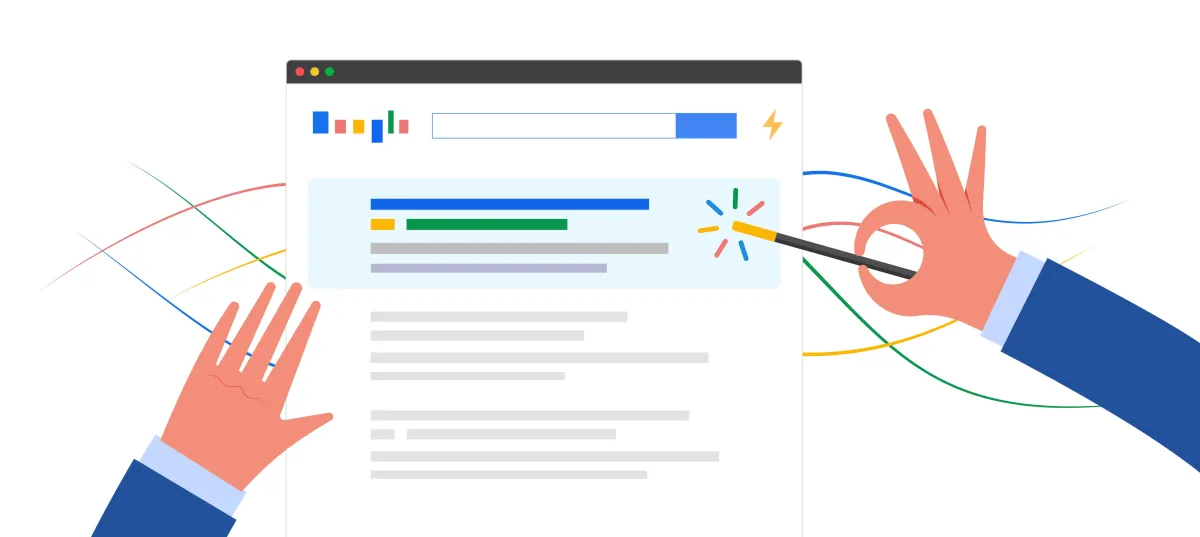
The Importance of Clear
Messaging in Internet Marketing
When it comes to internet marketing, clarity is vital. Research shows that brands that implement clarity in messaging enjoy a higher ROI than those that don’t. In addition, when your target audience clearly understands what a company represents, they are more likely to do business with them.
Simply put, clear messaging means efficiently delivering your brand's message for customers to understand. It involves using simple, concise language that gets right to the point.
By delivering your message clearly and concisely, you make it easy for customers to understand your company. This increases the likelihood that they will do business with you!
There are several reasons why clear messaging is so important in digital marketing.
1. Your audience is distracted.
First of all, online audiences are more distracted than ever before. They have a lot of information coming at them from all directions, and they don't have time to waste sorting through the clutter to find the truth. So if your brand messaging isn't clear, it will be lost in the noise.
2. Customers are more skeptical than ever.
Furthermore, prospective customers today are more skeptical than ever before. They no longer trust traditional advertising methods and quickly dismiss messages that don't make sense. If your brand's message is unclear, customers will be less likely to believe it and be less likely to take action.
To capture your audience's attention and get them interested in what you have to say, you need a clear and concise message that is easy to understand.
3. Competition is tough.
I you want to stand out from the competition, you need a clear message. With so much noise online, it's more important than ever to differentiate your brand and communicate what makes you unique. A clear message will help you do just that!
4. You need uniformity.
Having a clear marketing message will help you create a unified marketing strategy. When your marketing materials align with your core message, it sends a powerful signal to customers that you're serious about your business.
5. It keeps your employees on the same page.
Finally, a clear message is essential for keeping your employees on the same page. When everyone in your company knows and understands your brand's core message, it is easier to create consistent customer interactions.

The Importance
of Clear
Messaging
in Internet Marketing
When it comes to internet marketing, clarity is vital. Research shows that brands that implement clarity in messaging enjoy a higher ROI than those that don’t. In addition, when your target audience clearly understands what a company represents, they are more likely to do business with them.
Simply put, clear messaging means efficiently delivering your brand's message for customers to understand. It involves using simple, concise language that gets right to the point.
By delivering your message clearly and concisely, you make it easy for customers to understand your company. This increases the likelihood that they will do business with you!
There are several reasons why clear messaging is so important in digital marketing.
1. Your audience
is distracted.
First of all, online audiences are more distracted than ever before. They have a lot of information coming at them from all directions, and they don't have time to waste sorting through the clutter to find the truth. So if your brand messaging isn't clear, it will be lost in the noise.
2. Customers are more skeptical than ever.
Furthermore, prospective customers today are more skeptical than ever before. They no longer trust traditional advertising methods and quickly dismiss messages that don't make sense. If your brand's message is unclear, customers will be less likely to believe it and be less likely to take action.
To capture your audience's attention and get them interested in what you have to say, you need a clear and concise message that is easy to understand.
3. Competition
is tough.
I you want to stand out from the competition, you need a clear message. With so much noise online, it's more important than ever to differentiate your brand and communicate what makes you unique. A clear message will help you do just that!
4. You need uniformity.
Having a clear marketing message will help you create a unified marketing strategy. When your marketing materials align with your core message, it sends a powerful signal to customers that you're serious about your business.
5. It keeps your employees on the same page.
Finally, a clear message is essential for keeping your employees on the same page. When everyone in your company knows and understands your brand's core message, it is easier to create consistent customer interactions.

How to Automate
Your Marketing
Imagine being asked to do the same task multiple times a day, five days a week. These tasks are essential for your marketing process, but their time doesn't match their ROI.
This causes a lack of motivation and inspiration and leaves you feeling redundant. No business owner wants an unmotivated team. This is where automation comes into the picture.
Marketing automation helps your marketers focus on more exciting tasks. Automation can be applied to any marketing channel, such as email marketing, social media marketing, SEO/SEM, or website analytics. This allows you to gather customer data so the right content is sent to them at the right time.
Marketing automation tools are primarily used in the marketing department of various companies. The software automates repetitive tasks, streamlines manual procedures, and drives consistent performance.
The automated process leverages the power of data to create personalized experiences for each customer or segment. It also provides additional benefits that can increase revenues through conversion rates, higher average order values, and lower customer acquisition costs.
The 5 key steps in marketing automation are:
1. Build:
Create an automated campaign to launch your email, SMS & ad campaigns, websites, social networks, and more
2. Trigger:
Set up triggers so your campaign(s) will automatically engage customers at just the right time
3. Engage:
Deliver the right message via the right channel to the right person at the right time
4. Track:
Measure, report, and analyze your campaigns, so you know what's working and where to improve
5. Optimize:
Create more personalized messages based on campaign insights for better results.

How to Automate
Your Marketing
Imagine being asked to do the same task multiple times a day, five days a week. These tasks are essential for your marketing process, but their time doesn't match their ROI.
This causes a lack of motivation and inspiration and leaves you feeling redundant. No business owner wants an unmotivated team. This is where automation comes into the picture.
Marketing automation helps your marketers focus on more exciting tasks. Automation can be applied to any marketing channel, such as email marketing, social media marketing, SEO/SEM, or website analytics. This allows you to gather customer data so the right content is sent to them at the right time.
Marketing automation tools are primarily used in the marketing department of various companies. The software automates repetitive tasks, streamlines manual procedures, and drives consistent performance.
The automated process leverages the power of data to create personalized experiences for each customer or segment. It also provides additional benefits that can increase revenues through conversion rates, higher average order values, and lower customer acquisition costs.
The 5 key steps in marketing automation are:
1. Build:
Create an automated campaign to launch your email, SMS & ad campaigns, websites, social networks, and more
2. Trigger:
Set up triggers so your campaign(s) will automatically engage customers at just the right time
3. Engage:
Deliver the right message via the right channel to the right person at the right time
4. Track:
Measure, report, and analyze your campaigns, so you know what's working and where to improve
5. Optimize:
Create more personalized messages based on campaign insights for better results.

Benefits of Marketing
Automation
Implementing marketing automation into your strategy offers numerous benefits, such as:
It's a vital part of customer relationship management as it allows you to automate communication with your customers.
Boost productivity and efficiency by delegating repetitive tasks to marketing software that can execute them 24/hrs a day, giving marketers time to focus on
what matters most for their business.
You spend less money because you can automate what you're already doing and spending money on but not getting a good ROI from.
Data collection will give you valuable insight into what your customers want, allowing them to benefit before they even know it! This will enable marketers to provide what their customers need instead of what they think they might like or want.
You can automate what your customers want, what they need, and what works best for them. This will separate you from the rest of the competition!

Benefits of Marketing
Automation
Implementing marketing automation into your strategy offers numerous benefits, such as:
It's a vital part of customer relationship management as it allows you to automate communication with your customers.
Boost productivity and efficiency by delegating repetitive tasks to marketing software that can execute them 24/hrs a day, giving marketers time to focus on
what matters most for their business.
You spend less money because you can automate what you're already doing and spending money on but not getting a good ROI from.
Data collection will give you valuable insight into what your customers want, allowing them to benefit before they even know it! This will enable marketers to provide what their customers need instead of what they think they might like or want.
You can automate what your customers want, what they need, and what works best for them. This will separate you from the rest of the competition!

Choosing a Marketing
Automation Platform
Before you commit to a specific marketing automation platform, you should consider the following:
What Is the Primary Marketing Strategy for Your Company?
How Big of an Investment Can You Make Upfront?
The price point of using HubSpot depends on the package you choose. The professional package costs $560/month, while the enterprise package costs $3200/month.
Marketo starts at $895/month and goes up to $3195+ depending on the features you need Pardot is priced according to the plan you choose. It has four plans ranging from $1,250/month to $15,000 based on the features you need.
If budget isn't an issue, then go with Marketo. If it is, then go with Hubspot. You can always upgrade your plan later on or switch systems if you find it's not the best for you!
How Experienced Are You with Technology and Marketing Software?
Hubspot is not a complex software for someone familiar with marketing software.
Using Marketo takes a learning curve but is very user-friendly once you get used to it.
Pardot also has an initial learning curve and needs more upkeep than Marketo or Hubspot because it can be complex. As a result, it's best for marketers who want to track every touchpoint.
Do You Already Have a Website or Blog Established?
For marketers that already have a blog established, Hubspot is the best option because it has built-in blogging tools.
Marketo is great for you if you already have a website but don't have an established blog yet.
Pardot doesn't currently offer integrated marketing automation services with websites or blogs. You'll need to use other platforms in conjunction with Pardot (like Hubspot).
If you have your own blog, go with Hubspot. If not, Marketo is also suitable for that. Unfortunately, Pardot doesn't include blogging tools with the platform itself, so it's best to use it in conjunction with another system like HubSpot or Marketo!

Choosing a Marketing
Automation Platform
Before you commit to a specific marketing automation platform, you should consider the following:
What Is the Primary Marketing Strategy
for Your Company?
How Big of an Investment Can You Make Upfront?
The price point of using HubSpot depends on the package you choose. The professional package costs $560/month, while the enterprise package costs $3200/month.
Marketo starts at $895/month and goes up to $3195+ depending on the features you need Pardot is priced according to the plan you choose. It has four plans ranging from $1,250/month to $15,000 based on the features you need.
If budget isn't an issue, then go with Marketo. If it is, then go with Hubspot. You can always upgrade your plan later on or switch systems if you find it's not the best for you!
How Experienced Are You with Technology and Marketing Software?
Hubspot is not a complex software for someone familiar with marketing software.
Using Marketo takes a learning curve but is very user-friendly once you get used to it.
Pardot also has an initial learning curve and needs more upkeep than Marketo or Hubspot because it can be complex. As a result, it's best for marketers who want to track every touchpoint.
Do You Already Have a Website or Blog Established?
For marketers that already have a blog established, Hubspot is the best option because it has built-in blogging tools.
Marketo is great for you if you already have a website but don't have an established blog yet.
Pardot doesn't currently offer integrated marketing automation services with websites or blogs. You'll need to use other platforms in conjunction with Pardot (like Hubspot).
If you have your own blog, go with Hubspot. If not, Marketo is also suitable for that. Unfortunately, Pardot doesn't include blogging tools with the platform itself, so it's best to use it in conjunction with another system like HubSpot or Marketo!

What Is the Difference Between
a CRM and Marketing Automation?
Marketing automation automates the lead generation, tracking performance, and managing campaigns. It also involves customer relationship management (CRM).
The idea behind marketing automation is to make it easier for your business to engage with prospects and customers online by taking care of repetitive, time-consuming tasks that humans would otherwise have to do manually.
It affords them more time and energy to focus on higher-level activities like analyzing data and strategizing how best to use digital marketing channels in your overall strategy.
A CRM system can help you manage your contacts database, automate lead generation activities, track campaign performance, measure customer satisfaction levels over time, and more.
Marketing automation software should be a vital component of any marketing strategy as it helps you automate repetitive workflows and increase productivity. It also gives you essential insights about your audience to send the right message at the right time.
On top of that, it enables marketers to engage in meaningful conversations with their customers through social media channels such as Facebook, Twitter, and LinkedIn.

What Is the Difference Between
a CRM and Marketing Automation?
Marketing automation automates the lead generation, tracking performance, and managing campaigns. It also involves customer relationship management (CRM).
The idea behind marketing automation is to make it easier for your business to engage with prospects and customers online by taking care of repetitive, time-consuming tasks that humans would otherwise have to do manually.
It affords them more time and energy to focus on higher-level activities like analyzing data and strategizing how best to use digital marketing channels in your overall strategy.
A CRM system can help you manage your contacts database, automate lead generation activities, track campaign performance, measure customer satisfaction levels over time, and more.
Marketing automation software should be a vital component of any marketing strategy as it helps you automate repetitive workflows and increase productivity. It also gives you essential insights about your audience to send the right message at the right time.
On top of that, it enables marketers to engage in meaningful conversations with their customers through social media channels such as Facebook, Twitter, and LinkedIn.

What Is Customer
Relationship Management?
CRM stands for customer relationship management, which involves interacting with your customers more meaningfully than traditional ways of promoting your brand.
It's about identifying your best-fit clients and understanding their needs better to provide them with value at every interaction stage of the customer life cycle (i.e., sales and customer service). The goal is to build long-lasting relationships with your customers.

What Is Customer
Relationship Management?
CRM stands for customer relationship management, which involves interacting with your customers more meaningfully than traditional ways of promoting your brand.
It's about identifying your best-fit clients and understanding their needs better to provide them with value at every interaction stage of the customer life cycle (i.e., sales and customer service). The goal is to build long-lasting relationships with your customers.

CRM vs. Marketing
Automation
Marketing automation utilizes software with features that are designed to help automate your marketing tasks, including lead management, email marketing, digital marketing campaigns, and more.
CRM is also a type of sales automation that helps you with customer interaction management by tracking the lifecycle of the customer in one place.

CRM vs. Marketing
Automation
Marketing automation utilizes software with features that are designed to help automate your marketing tasks, including lead management, email marketing, digital marketing campaigns, and more.
CRM is also a type of sales automation that helps you with customer interaction management by tracking the lifecycle of the customer in one place.

How to Use Marketing
Automation and CRM Together?
Marketing Automation and CRM together can be used in several ways:
1
Create customized landing pages based on lead information pulled from CRM or gathered through marketing automation email campaigns. This would allow you for more accurate content to be published.
2
Use your marketing automation tool and CRM to identify prospects who have been browsing your website for a certain amount of time but have not purchased or reached out yet so that you can reach back out with relevant information at the right time.
This could include sending them an email asking if they need help getting started on their project or reaching out with a link to your "how it works" page.
3
Use marketing automation and CRM as part of an email campaign, ensuring that the right content is being sent at the right time so you can close more customers.
This could be sending new product information based on their purchase history, identifying their stage in the customer journey, and sending relevant content.
4
Use marketing automation to track web activity to generate new leads based on their interests or how long they browse your website.
This allows your team to be ready when a potential client is looking for more information about your company's services/products. In addition, use this information to update your website to cater more to their needs.
5
Use marketing automation and CRM together when following up on a call or email, making sure you are pulling relevant client history from both platforms before reaching out. It will save time for the customer service representative by not having to access two systems whenever they need to reach out to someone.
6
Use marketing automation and CRM together when emailing your customers so that they can easily update their contact information or provide feedback about an issue.
You could do all of this through one platform instead of going back and forth between two different systems simultaneously throughout the day. This would also open up more opportunities for feedback or get in touch when needed.
7
Use marketing automation to send reminders about products that are expiring soon, so you can be sure your customers can upgrade/renew before their contract is over.
For example, if a client needs an additional user on their account but it expires in 30 days, send an email or calendar invite reminder to get this taken care of before the account is terminated.
8
Use marketing automation and CRM for product launch emails to pull in all relevant information about a new product from both platforms simultaneously. In addition, it would save time when creating targeted content based on customer history with your company.
9
Use marketing automation and CRM as part of the onboarding process for new clients, ensuring they have access to whatever information is needed at any time so you can provide better service on behalf of your company.
This could include sending them their login credentials or asking if there's anything else you can do before concluding a meeting/call.

How to Use Marketing
Automation and CRM Together?
Marketing Automation and CRM together can be used in several ways:
1
Create customized landing pages based on lead information pulled from CRM or gathered through marketing automation email campaigns. This would allow you for more accurate content to be published.
2
Use your marketing automation tool and CRM to identify prospects who have been browsing your website for a certain amount of time but have not purchased or reached out yet so that you can reach back out with relevant information at the right time.
This could include sending them an email asking if they need help getting started on their project or reaching out with a link to your "how it works" page.
3
Use marketing automation and CRM as part of an email campaign, ensuring that the right content is being sent at the right time so you can close more customers.
This could be sending new product information based on their purchase history, identifying their stage in the customer journey, and sending relevant content.
4
Use marketing automation to track web activity to generate new leads based on their interests or how long they browse your website.
This allows your team to be ready when a potential client is looking for more information about your company's services/products. In addition, use this information to update your website to cater more to their needs.
5
Use marketing automation and CRM together when following up on a call or email, making sure you are pulling relevant client history from both platforms before reaching out. It will save time for the customer service representative by not having to access two systems whenever they need to reach out to someone.
6
Use marketing automation and CRM together when emailing your customers so that they can easily update their contact information or provide feedback about an issue.
You could do all of this through one platform instead of going back and forth between two different systems simultaneously throughout the day. This would also open up more opportunities for feedback or get in touch when needed.
7
Use marketing automation to send reminders about products that are expiring soon, so you can be sure your customers can upgrade/renew before their contract is over.
For example, if a client needs an additional user on their account but it expires in 30 days, send an email or calendar invite reminder to get this taken care of before the account is terminated.
8
Use marketing automation and CRM for product launch emails to pull in all relevant information about a new product from both platforms simultaneously. In addition, it would save time when creating targeted content based on customer history with your company.
9
Use marketing automation and CRM as part of the onboarding process for new clients, ensuring they have access to whatever information is needed at any time so you can provide better service on behalf of your company.
This could include sending them their login credentials or asking if there's anything else you can do before concluding a meeting/call.

Putting It All Together with
the Business GrowthStack
Getting started with your digital marketing system can be overwhelming. The key is to get your basics down and start with the necessities. And the easiest way to do that is by following the the Business GrowthStack, as laid out in the best-selling book The Golden Toilet.
The Business GrowthStack is a four-part framework that thousands of brands use every day to grow their businesses. It includes four crucial components, many of which we’ve already discussed.
If you can incorporate all four into your marketing platform, you set your small business up for success without investing thousands and hours of manwork into something that you won’t get anything out of.

Putting It All Together with the Business GrowthStack
Getting started with your digital marketing system can be overwhelming. The key is to get your basics down and start with the necessities. And the easiest way to do that is by following the the Business GrowthStack, as laid out in the best-selling book The Golden Toilet.
The Business GrowthStack is a four-part framework that thousands of brands use every day to grow their businesses. It includes four crucial components, many of which we’ve already discussed.
If you can incorporate all four into your marketing platform, you set your small business up for success without investing thousands and hours of manwork into something that you won’t get anything out of.
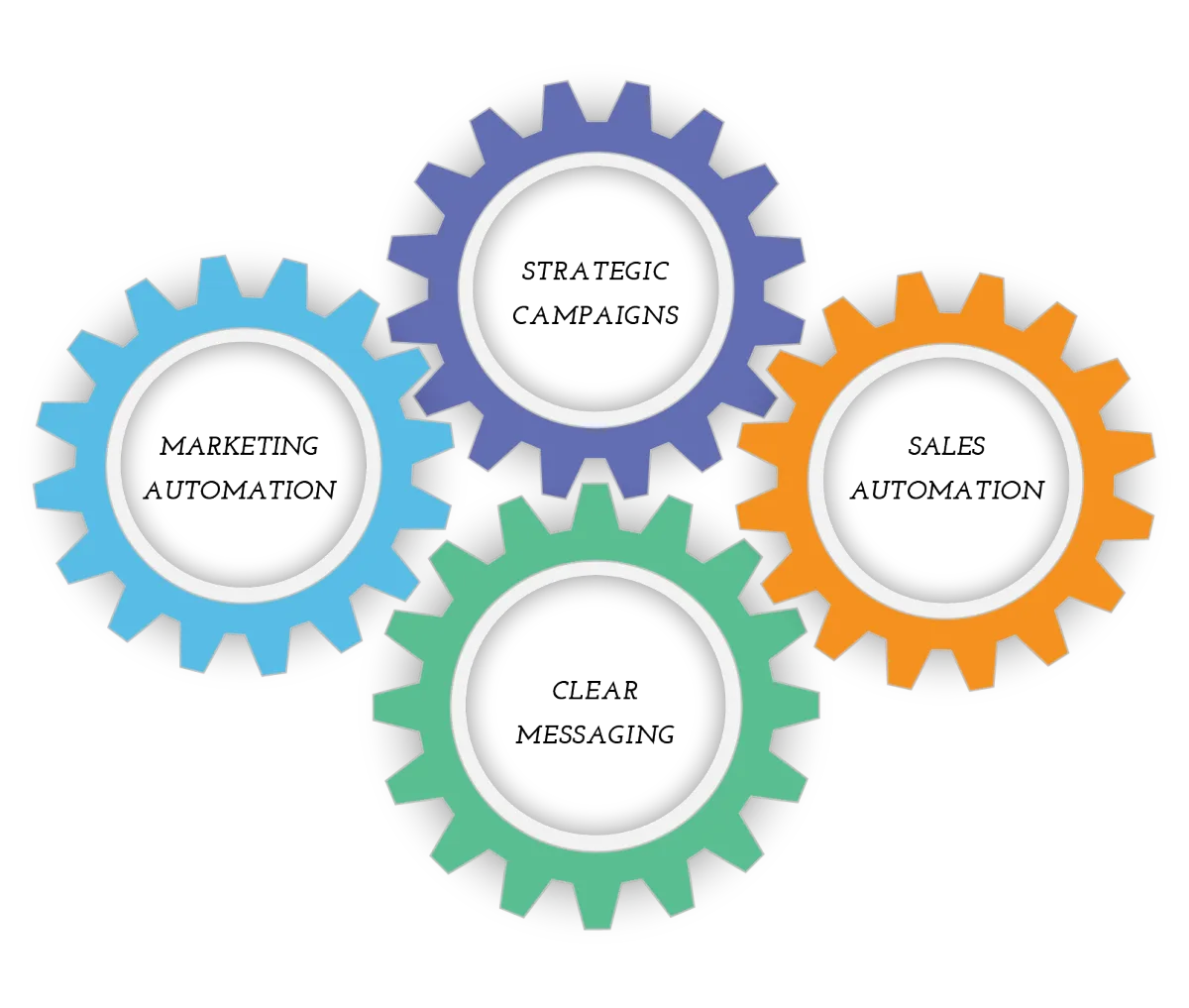
The Four Components of
the Business GrowthStack
1. Clear Messaging
Clear messaging is the foundation behind any successful marketing strategy. If you don’t have strong, relatable content, your content strategy is doomed to fall flat. You need clear messaging to keep customers from bouncing off your website, to remove obstacles preventing leads from buying your product, and to close deals.
One of the easiest ways to clarify your message is StoryBrand. This seven-part framework will help you simplify your content using the principles of effective storytelling. Another essential content marketing strategy to follow is Mindstate Marketing, which uses behavioral science and psychology to make your content irresistible.
The critical thing to remember here is that clear messaging doesn’t stop with your website. It needs to be evident in everything you do, from your emails and sales brochures to presentations and blogs.
2. Marketing Automation
As the second piece in the Business GrowthStack, marketing automation helps you deliver a helpful user experience without having to lift a finger. It’s seamless, and it creates the impression of intention on your part—without extra work on your part.
The most common and most effective form of marketing automation is the automated email series. After a potential customer has interacted with your site, they should be enrolled to receive a series of targeted emails designed to nurture them into paying customers.
If you don’t have many potential customers visiting your store or calling you for more information, marketing automation could be the piece you’re missing.
3. Sales Automation
When it comes to the most important department in your business, sales probably takes the If you don’t have sales automation, you won’t see the results from the other pieces of the GrowthStack. You’ll have dozens of leads brought to your doorstep, but then you’ll just be turning them away.
Sales automation involves using your CRM (Customer Relationship Manager) to manage, communicate, and sell to leads without having to lift a finger. It’s a system that helps you sort leads based on relevancy, keep track of every interaction you have with them, and enroll them in an automated sales-specific email sequence.
READ: What’s the Difference Between Marketing Automation and Sales Automation?
4. Campaigns
The last piece of the Business GrowthStack is campaigns. Campaigns are multi-part systems designed to attract customers, collect their information, send them an email, and nurture them into paying customers. They combine the first two pieces of the GrowthStack into one well-oiled machine, and they make it easy to track your success and ROI.
Campaigns include these critical pieces of content:
A lead generating magnet. This can be a PDF, ebook, infographic, free book chapter, or even a video. It must be hidden behind a form so the lead has to give their email to receive the content.
A landing page. This is where the lead will fill out the form to download your lead generating magnet.
A thank-you page. Once the form has been submitted, your lead should automatically be sent to a thank-you page, where they can access the content they requested and learn more about your company.
A follow-up email. Immediately after the form submission, the potential customer will also automatically receive a follow-up email. This email contains a link to the lead magnet and pushes them to take the next step (whether that’s scheduling a meeting, buying a product, or downloading a sales piece).
Once you have created a campaign, you should create automated email sequences to continue to nurture leads until they are ready to purchase. You can create a new campaign each quarter or run several at once.
For most clients, we recommend making a campaign for each buyer persona you have and every for each of their steps in the buyer’s journey.

The Four Components
of the Business GrowthStack
1. Clear Messaging
Clear messaging is the foundation behind any successful marketing strategy. If you don’t have strong, relatable content, your content strategy is doomed to fall flat. You need clear messaging to keep customers from bouncing off your website, to remove obstacles preventing leads from buying your product, and to close deals.
One of the easiest ways to clarify your message is StoryBrand. This seven-part framework will help you simplify your content using the principles of effective storytelling. Another essential content marketing strategy to follow is Mindstate Marketing, which uses behavioral science and psychology to make your content irresistible.
The critical thing to remember here is that clear messaging doesn’t stop with your website. It needs to be evident in everything you do, from your emails and sales brochures to presentations and blogs.
2. Marketing Automation
As the second piece in the Business GrowthStack, marketing automation helps you deliver a helpful user experience without having to lift a finger. It’s seamless, and it creates the impression of intention on your part—without extra work on your part.
The most common and most effective form of marketing automation is the automated email series. After a potential customer has interacted with your site, they should be enrolled to receive a series of targeted emails designed to nurture them into paying customers.
If you don’t have many potential customers visiting your store or calling you for more information, marketing automation could be the piece you’re missing.
3. Sales Automation
When it comes to the most important department in your business, sales probably takes the If you don’t have sales automation, you won’t see the results from the other pieces of the GrowthStack. You’ll have dozens of leads brought to your doorstep, but then you’ll just be turning them away.
Sales automation involves using your CRM (Customer Relationship Manager) to manage, communicate, and sell to leads without having to lift a finger. It’s a system that helps you sort leads based on relevancy, keep track of every interaction you have with them, and enroll them in an automated sales-specific email sequence.
READ: What’s the Difference Between Marketing Automation and Sales Automation?
4. Campaigns
The last piece of the Business GrowthStack is campaigns. Campaigns are multi-part systems designed to attract customers, collect their information, send them an email, and nurture them into paying customers. They combine the first two pieces of the GrowthStack into one well-oiled machine, and they make it easy to track your success and ROI.
Campaigns include these critical pieces of content:
A lead generating magnet. This can be a PDF, ebook, infographic, free book chapter, or even a video. It must be hidden behind a form so the lead has to give their email to receive the content.
A landing page. This is where the lead will fill out the form to download your lead generating magnet.
A thank-you page. Once the form has been submitted, your lead should automatically be sent to a thank-you page, where they can access the content they requested and learn more about your company.
A follow-up email. Immediately after the form submission, the potential customer will also automatically receive a follow-up email. This email contains a link to the lead magnet and pushes them to take the next step (whether that’s scheduling a meeting, buying a product, or downloading a sales piece).
Once you have created a campaign, you should create automated email sequences to continue to nurture leads until they are ready to purchase. You can create a new campaign each quarter or run several at once.
For most clients, we recommend making a campaign for each buyer persona you have and every for each of their steps in the buyer’s journey.

How to Implement the GrowthStack
in Your Digital Marketing Strategy
The Business GrowthStack isn’t a theoretical set of principles we made up. It’s a proven system used by hundreds of businesses across the globe.
If you’re tired of never getting results from your marketing, it’s time to leave the outdated marketing tactics behind. The Business GrowthStack will provide your business with a holistic marketing system you can trust to bring leads to your door and close the deal.
At ROI Online, the Business GrowthStack is what we do. We have 3 services designed to help big brands and small businesses alike refresh their marketing strategy and create effective internet marketing campaigns that deliver results.

How to Implement the GrowthStack
in Your Digital Marketing Strategy
The Business GrowthStack isn’t a theoretical set of principles we made up. It’s a proven system used by hundreds of businesses across the globe.
If you’re tired of never getting results from your marketing, it’s time to leave the outdated marketing tactics behind. The Business GrowthStack will provide your business with a holistic marketing system you can trust to bring leads to your door and close the deal.
At ROI Online, the Business GrowthStack is what we do. We have 3 services designed to help big brands and small businesses alike refresh their marketing strategy and create effective internet marketing campaigns that deliver results.
ROI Clarity Sessions
Starting at $1,879
Work one-on-one with a marketing co-driver and strategist
Get real-time, personalized coaching on your marketing
Clarify your messaging with the help of a content specialist
Select the services you need most from a menu of options
GrowthStack CRM
Starting at $97/Month
Build your own website, automated emails, text message campaigns, and more
Access all the tools you need to build a well-oiled business growth machine
Get full setup support, one-on-one onboarding, tech support, and ongoing training videos
The ROI Pro Plan
Starting at $5,779/Month
Work together with a full team of marketing experts
Create, build, and execute the Business GrowthStack in 120 days
Receive one-on-one training and education every step of the way
Walk away with everything you need to take your business to the next level
ROI Clarity Sessions
Starting at $1,879
Work one-on-one with a marketing co-driver and strategist
Get real-time, personalized coaching on your marketing
Clarify your messaging with the help of a content specialist
Select the services you need most from a menu of options
GrowthStack CRM
Starting at $97/Month
Build your own website, automated emails, text message campaigns, and more
Access all the tools you need to build a well-oiled business growth machine
Get full setup support, one-on-one onboarding, tech support, and ongoing training videos
The ROI Pro Plan
Starting at $5,779/Month
Work together with a full team of marketing experts
Create, build, and execute the Business GrowthStack in 120 days
Receive one-on-one training and education every step of the way
Walk away with everything you need to take your business to the next level
